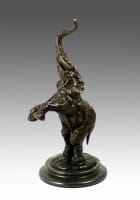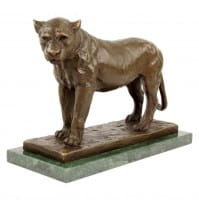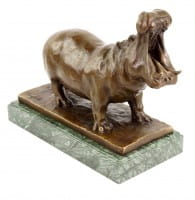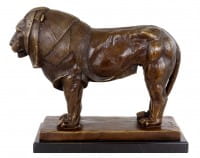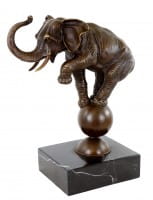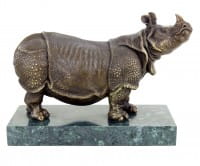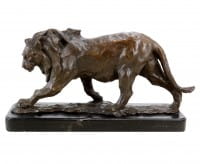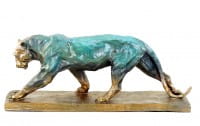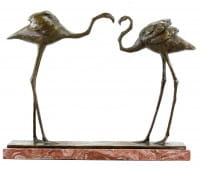Artistic Development
Encouraged by family friend and sculptor Prince Paolo Troubetzkoy, Bugatti honed his skills in modeling and casting. He developed a profound interest in animals, frequently visiting the Jardin des Plantes in Paris and the Antwerp Zoo to observe and study their forms and behaviors. These observations became the foundation for his sculptures, which are noted for their realism and emotional depth.
Rembrandt Bugatti Sculpture
Rembrandt Bugatti's sculptures are characterized by their lifelike representation and dynamic movement. He primarily worked with bronze, employing the lost-wax casting technique to achieve intricate details. His subjects included a wide range of animals, from elephants and lions to panthers and deer. Notable works include "Trois Panthères Marchant" (Three Walking Panthers) and "Éléphant au Repos" (Resting Elephant), which exemplify his ability to convey the grace and strength of his subjects.
Collaboration and Recognition
Bugatti collaborated with Adrien-Aurélien Hébrard, a renowned art dealer and founder, who played a crucial role in promoting his work. Through Hébrard's gallery, Bugatti's sculptures gained significant attention and were exhibited widely, solidifying his reputation in the art world.
Personal Struggles and Legacy
During World War I, Bugatti volunteered at a military hospital in Antwerp, an experience that deeply affected him. Coupled with financial difficulties and the loss of many animals at the Antwerp Zoo due to the war, he fell into depression. Tragically, he took his own life in Paris at the age of 31.
Despite his short life, Bugatti's work has had a lasting impact. His sculptures are held in prestigious collections and continue to be celebrated for their artistic merit. In homage, his brother Ettore used one of Rembrandt's elephant sculptures as the hood ornament for the Bugatti Royale, intertwining the family's artistic and automotive legacies.
Conclusion
Rembrandt Bugatti's dedication to capturing the spirit of animals in sculpture has left an indelible mark on the art world. His works remain a testament to his skill and passion, continuing to inspire and captivate audiences worldwide.





